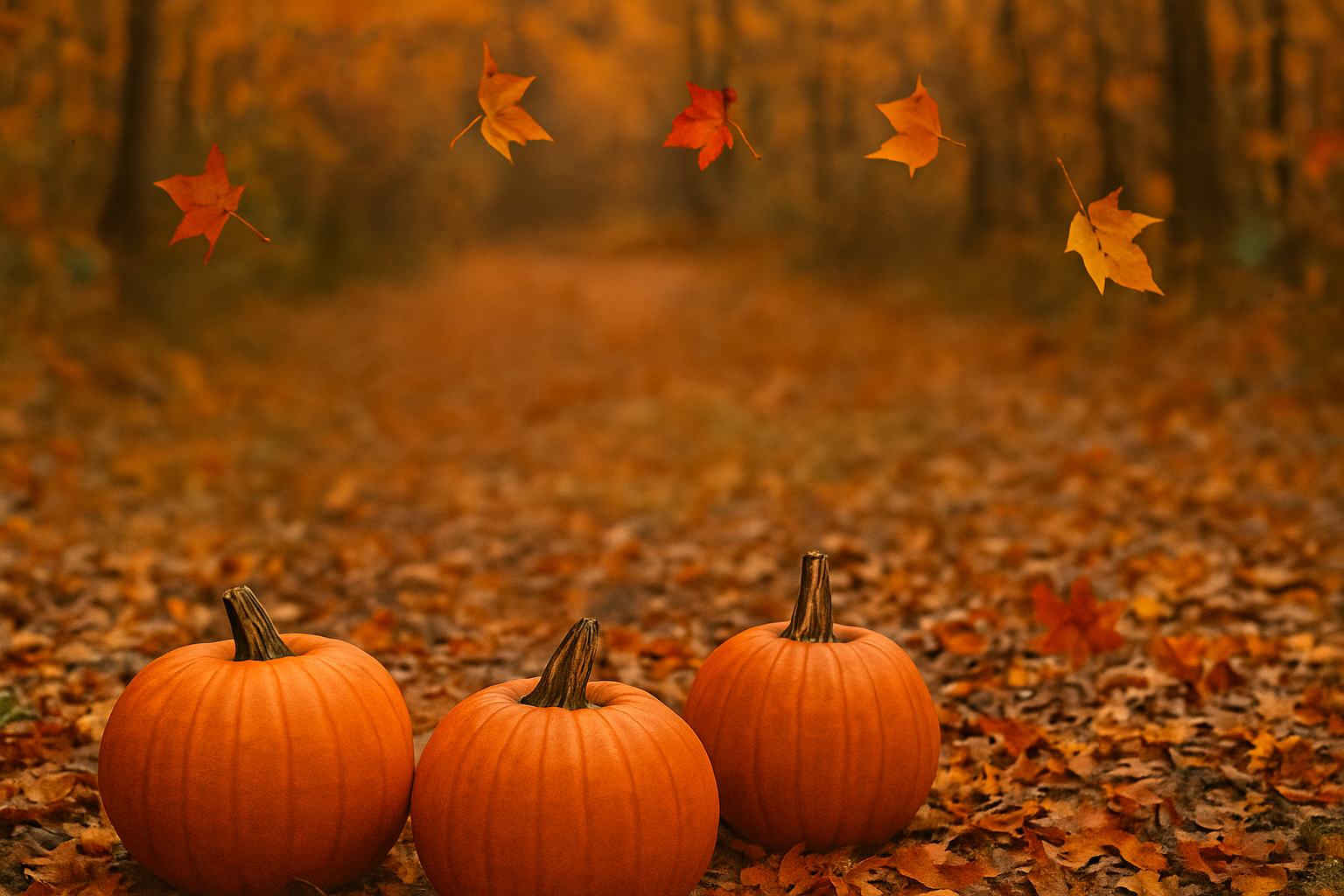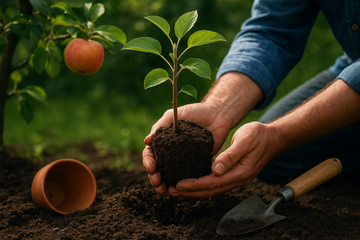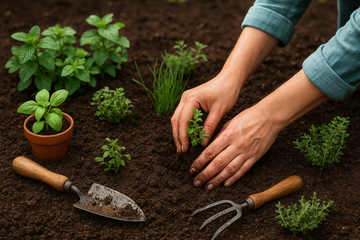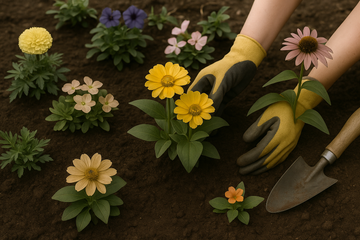Fall is a magical time in the garden: cooler temperatures, richer hues, crisp air. But instead of putting your garden to rest, autumn offers a unique window to plan, sow, and harvest — extending your growing season and reaping fresh produce longer into the year. In this blog post for SeedsChoice.com, we’ll walk through how to master fall gardening, from choosing the right seeds to preparing beds, and spotlight some excellent seed varieties available on SeedsChoice to help your fall garden thrive.
Why Fall Gardening Matters
Many gardeners assume the growing season ends with summer—not so. A well-planned fall bed can yield fresh greens, root crops, and ornamental touches well into late autumn or even early winter (depending on climate). According to gardening authorities, you can plant many things between July and September to sustain harvests through first frosts.
Some key advantages:
-
Cooler temperatures reduce heat stress on plants
-
Fewer pests in many cases
-
Soil is still warm (from summer), aiding germination
-
You make full use of garden space
-
Aesthetic appeal: fall foliage, pumpkins, late blossoms
Planning Your Fall Garden
1. Know your frost dates
First, determine your first expected frost date. That gives you the window for sowing and maturity. Many fall crops tolerate light frost or even improve in flavor when touched by one. Frost-tolerant plants are crucial.
2. Choose the right crops
Focus on cool-season crops and frost-hardy vegetables for your autumn garden. Think leafy greens, brassicas, root vegetables, and ornamental pumpkins and gourds.
Here are a few excellent seed varieties from SeedsChoice that are ideal for fall gardening:
-
Organic Kale Seeds (Brassica oleracea sabellica) — This frost-tolerant kale thrives in cool weather.
-
Groenlof (Cichorium intybus ‘early self-closing’) — A hardy green that continues producing into late autumn.
-
Endive ‘Nuance’ (Cichorium endivia) — Performs reliably in summer through autumn conditions.
-
Purple Cauliflower (Sicilian Violetto) — A striking brassica that can be harvested in autumn/winter.
-
Organic Halloween Pumpkin (Jack O’Lantern) — A festive pick for carving and garden display.
-
Rouge Vif d’Étampes Pumpkin — An heirloom that gives vibrant orange autumn harvests.
You can browse more autumn-friendly seed mixes in SeedsChoice’s Mixtures collection, where you’ll find border flowers, late bloomers, and garden accents.
3. Map the garden
-
Reserve space for late sowings (greens, radishes, spinach)
-
Rotate crops where possible
-
Add raised beds or cold frames for insulation
When and How to Sow / Plant in Fall
Timing is critical. Here’s a general guideline (adjust for your local climate):
-
Late summer (July–August): Sow quick-growing greens, radishes, spinach, lettuce
-
Mid to late August: Plant brassicas (broccoli, cauliflower, kale) for autumn harvest
-
Early autumn (Sept): Focus on hardy crops, sow cover crops, and plant bulbs
Tips for successful sowing
-
Use well-prepared, fertile, well-draining soil
-
Keep soil moist during germination
-
Thin seedlings to avoid overcrowding
-
Use mulch to moderate soil temperature and preserve moisture
-
Protect young plants with row covers on cold nights
Care Tips for Your Fall Garden
Monitor light & temperature
Days are shorter in autumn. When necessary, choose garden spots that get maximum sun. If light is low, consider supplemental grow lights or reflective surfaces.
Watering & irrigation
Water deeply but less often, keeping soil moist (not soggy). Cooler air slows evaporation, so adjust accordingly.
Pest and disease management
While many pests diminish in fall, some fungi thrive in cool, damp conditions:
-
Ensure good air circulation
-
Remove decaying leaves
-
Use organic sprays if needed
Fertilizing / Feeding
Use a balanced or high nitrogen feed early, then switch to maintenance feeding. Compost tea or leaf compost are excellent in fall.
Mulching & protection
Apply organic mulch (leaves, straw) to protect roots. For extremely cold nights, use fleece or cloches over plants.
Fall Garden to Encore: Harvest and Storage
As crops mature, harvest before heavy frost. Some produce even sweetens after light frost (like kale). Wash field greens in cool water, and store veggies properly:
-
Greens: refrigerate in crispers
-
Root crops: cool, dark, humid environment
-
Pumpkins & squash: cure in sun a bit then store in a dry cool place
Also, after harvest you can sow a cover crop (clover, rye) to enrich the soil.
Fall Gardening Checklist
-
✅ Determine first frost date
-
✅ Select frost-tolerant and cool-season crops
-
✅ Sow quick greens first; brassicas mid-season
-
✅ Prepare soil, mulch, and ensure drainage
-
✅ Thin seedlings, maintain air circulation
-
✅ Monitor pests and fungal issues
-
✅ Harvest early, cure pumpkins/squash
-
✅ Sow cover crops after harvest
FAQ
Q1: Can I plant a fall garden in all climates?
A: Yes — but your sowing window depends on your local first fall frost. In warmer zones, you may continue well into October; cold regions need earlier planting. Always check your local frost data.
Q2: Which vegetables tolerate frost best?
A: Kale, collards, spinach, Brussels sprouts, chard, and many root vegetables like carrots and beets. Some brassicas are hardy too.
Q3: Should I start seeds indoors or sow directly?
A: It depends. Quick greens and root crops often do fine direct sowed. Brassicas may start indoors for stronger start, then transplant.
Q4: How do I protect seedlings on cold nights?
A: Use row covers, fleece, cloches, or even old sheets. Mulching also insulates roots.
Q5: What should I do after harvest?
A: Remove spent plants, compost healthy debris, sow a cover crop to replenish nutrients, and add organic matter for next season.
Final Thoughts
The beauty of fall gardening lies in the opportunity to stretch your growing season and harvest fresh, often sweetened, produce well past summer. With intentional planning, frost-hardy varieties, and proper care, you can transform Autumn into a second spring in the garden.
At SeedsChoice, you’ll find a superb selection of seeds tailored to autumn and winter gardening — from frost-tolerant kale to pumpkins and mixed borders to brighten fall. Leverage those offerings, combine them with the tips above, and enjoy a rich, productive, and colorful garden well into the colder months.












